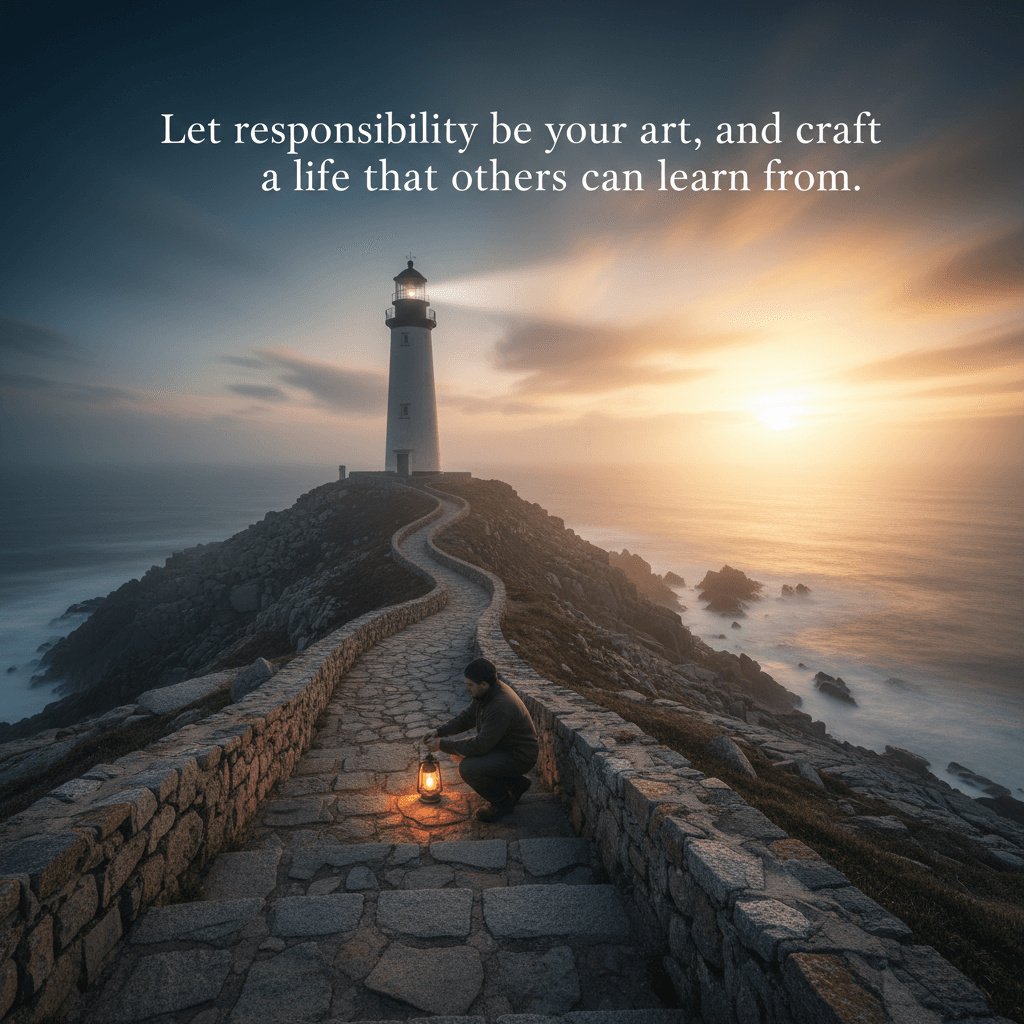Responsibility as Art: Crafting Exemplary Existential Lives

Let responsibility be your art, and craft a life that others can learn from. — Simone de Beauvoir
Freedom That Demands Accountability
Simone de Beauvoir’s imperative binds freedom to responsibility, turning existence into a deliberate composition. In The Ethics of Ambiguity (1947), she argues that our choices create values in a world without pre-given meaning; thus, evasion is itself a choice that shapes who we become. The quote insists our lives be coherent works—crafted so that others can read, revise, and learn from them. Moreover, influence is inevitable; as Sartre put it in Existentialism Is a Humanism (1946), choosing for oneself proposes a model for humanity. Therefore, responsibility is not an optional flourish but the frame that makes freedom intelligible.
Why Responsibility Feels Like an Art
Moving from theory to practice, responsibility resembles art because it depends on judgment, sensitivity, and revision more than on rigid rules. Beauvoir calls our condition “ambiguous”: we are both free and finite, obliged to invent responses that fit messy realities. Like a painter mixing tones or a jazz musician improvising within a key, we refine action through feedback, not formula. Aristotle’s notion of phronesis—practical wisdom in the Nicomachean Ethics—anticipates this skillful discernment, yet Beauvoir extends it to a world where values are not fixed. Thus responsibility becomes a craft honed through attempts, errors, and better attempts.
Living as a Teachable Example
If responsibility is an art, the finished pieces are lives that instruct without preaching. This does not require heroics; it requires legible commitments. Consider Frederick Douglass’s Narrative (1845): his self-education and public testimony transform personal liberation into civic pedagogy. Or recall Rachel Carson’s Silent Spring (1962), which converts private scientific diligence into a public ethic of care for future generations. Such exemplars show how consistent choices—what we fund, tolerate, refuse—compose a visible syllabus others can study. In this way, the quote reframes influence as a duty: our lives are case studies, and the footnotes are the people who follow.
Intersubjectivity and Reciprocal Projects
Yet Beauvoir warns that examples matter only if they respect others’ freedom. In The Second Sex (1949), she critiques “Othering,” where one’s freedom expands by confining another’s. Ethical projects, then, are reciprocal: we craft lives that widen possibility for those around us. A responsible “art” refuses domination, choosing collaborations that share authorship. This reciprocity deepens the educational force of example because it invites participation rather than imitation. When our projects are co-created—mentorships that empower, workplaces that distribute credit—learning becomes mutual, and the artwork is not the solitary self but a community’s growing capacity.
Avoiding the Performance Trap
However, visibility tempts performance. Beauvoir’s contemporary Sartre called this bad faith: playing a role to escape the burden of freedom. In the age of feeds and metrics, moral postures can eclipse moral costs. Responsible artistry resists this by accepting trade-offs—time spent caring, reputation risk when dissenting, material limits—and by refusing to use people as props. The test is counterfactual: would you act likewise without applause? If yes, your example educates through integrity rather than spectacle, modeling courage that students—literal or figurative—can trust when it becomes costly to do the right thing.
Practices That Shape Responsible Freedom
Translating ideals into craft requires techniques. First, iterative reflection—journaling brief after-action reviews—turns experience into method. Second, public commitments with feedback loops (advisory circles, community charters) align intention and effect. Third, apprenticeship and mentorship transmit tacit knowledge; Plato’s Republic (c. 375 BC) shows institutions matter, but lived tutelage makes virtues stick. Fourth, choose projects that scale others’ agency: teach a process, open-source a tool, document failures as well as wins. Finally, schedule “reality checks”—meet those affected by your work—to keep art accountable to its audience. Through these habits, responsibility gains the texture of craft.
From Private Craft to Public Culture
Consequently, crafted responsibility can seed institutions where exemplary behavior becomes ordinary. Hannah Arendt’s The Human Condition (1958) describes a “space of appearance” where deeds become public; designing such spaces—transparent governance, fair credit, accessible archives—invites communal learning. Policies that encode review, redress, and shared authorship turn single examples into durable norms. Thus the arc completes: the artist of responsibility shapes a life; the life shapes a culture; the culture, in turn, educates new artists. By this spiral, Beauvoir’s charge becomes practical: craft yourself so that freedom and care are easier for those who come next.